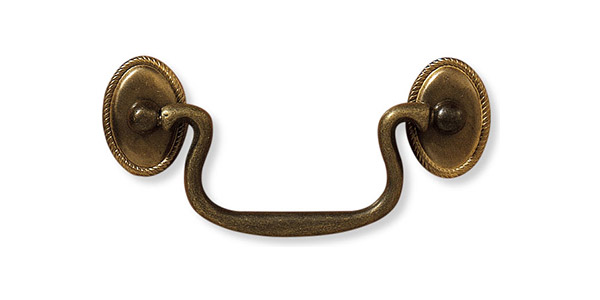Looking at the role of interior handles in architectural detail
Detail does matter, in both architectural and interior design terms. Functional metalwork, in the form of door and window handles, can be so visually important. They are used frequently throughout each day, so they need to combine ergonomic comfort with visually-pleasing looks.
If you are designing an interior scheme to a specific historical period, then your range of options should probably be limited to metalwork designs of that time. If you are working in a generic traditional style then your options are rather more complicated.
The origins and development of door handles
The history of door handles is relatively unknown, with nothing documented about their invention, but it is safe to say they have been around ever since doors came into being. Egyptian tombs with their descriptive wall paintings depict doors with handles made of wood. Roman and Babylonian civilisations even used hinges for their doors, a mechanism which of course is still used today. In the 1900’s ball-bearings were invented and the technology subsequently used for door knobs.
Wooden handles continued to be used throughout colonial times. But by the 1900’s they were becoming less popular due to their lack of durability and were beginning to be replaced by cast- metal, porcelain, bronze and glass door handles It was, in fact, in 1878 that the first documented invention of the door handle appeared in the United States, designed by a man named Osbourn Dorsey.
In England, during Victorian times, for example, we know from visual references that door handles were made from cast bronze with ornamental patterns which epitomised the Victorians’ love of embellishment.

Ornate Victorian brass door handle
Most of the door handles of today are made from iron, bronze, brass, aluminium, wrought iron, steel or stainless steel. The basic types of handle are divided into the following types: bail handles; lifting handles; oval-plate and ring handles; fixed handles (knobs and bars) and lever handles.

A handle type known as a bail handle
Handle design and positioning
The positioning of a door or cupboard handle is a crucial factor in the overall look of an interior. It may be positioned for maximum embellishment or used as subtle adornment but, its impact, depending on how it’s positioned, can be visually harmonious, if positioned correctly or disastrous, if not. Symmetry is always attractive – the visual harmony of lining things up, either vertically or horizontally is appealing. Our eyes read a space by scanning it and anything that ‘interrupts’ our scan jumps out at us. Dotted handles all over cupboards, for example, read as ‘too busy’ or discordant. Handles that are out of proportion can look too heavy or clumsy, eclipsing the actual structure of a cupboard or unit.
A sense of ‘relationship’ must be observed so, in order to position a handle correctly, you will first need to determine its visual centre of mass. For example, on a round plate-and-ring handle, the centre is generally the top of the ring. On a lever handle, it is the bend in the lever, or the ‘neck’ of that particular style of handle. The goal in all cases is to place the centre of mass slightly above the centre line of the drawer front. The deeper the drawer front, the higher the handle should be placed above the centre line.

The witty Outline handle by Studioforma Architects